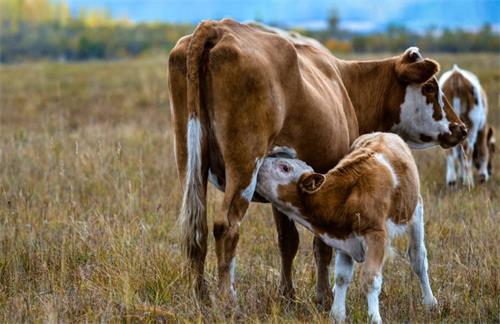Veterinary B-ultrasound plays an irreplaceable role in the sow breeding process. It can not only accurately measure the back fat thickness of the reserve sow, but also accurately judge the pregnancy status and fetal development of the sow.
Veterinary B-ultrasound helps to cultivate excellent reserve sows
1. The reserve sow breed is required to have excellent genetic performance, meet the characteristics of the breed or strain (such as Landrace, Large White, Duroc), medium to above average body condition, good body development, long physique, more than 6 pairs of effective nipples arranged neatly and evenly, gentle personality, good maternal nature, strong resistance to adversity, fast feeding, and not picky eating. It has the genetic performance of fast growth rate, high feed reward, thin back fat detected by veterinary B-ultrasound, high lean meat rate, and large litter size.
Veterinary B-ultrasound machine BXL-V20
2. To raise reserve sows well, they should be fed freely before reaching a weight of 60 kg, and restricted feeding after 60 kg. The daily feed is about 2 kg per head, and green feed is added. The body condition cannot be too fat, which affects the reproductive performance of sows. Under good feeding and management conditions, gilts can estrus for the first time on time at 6 months of age. At this time, the nutritional needs of gilts increase. It is recommended to add Yichuwang to the daily diet of gilts from 6 months of age to effectively supplement the trace elements and functional minerals required for the reproductive development of gilts, promote the development of the ovaries and uterus of gilts, and achieve physical maturity and sexual maturity.
Veterinary B-ultrasound can reasonably arrange the breeding season
Breed in October, give birth in January and February of the following year; breed again in February and March, give birth in June and July. With this arrangement, sows can produce 2.5 litters a year and 5 litters in two years (reaching the international *** pig farming level). According to veterinary B-ultrasound analysis, local sows should be bred 2-3 days after estrus, introduced sows should be bred in the afternoon of the day after estrus or the morning of the second day, and hybrid sows should be bred in the afternoon of the second day after estrus. When breeding, follow the principle of "early breeding of old, late breeding of young, and breeding in the middle of neither old nor young". Years of practice have shown that mating before morning and evening feeding can ensure a conception rate of 85%.
Veterinary B-ultrasound can help reduce the mortality rate of large litters of piglets
1. Pregnancy feeding: Adding fat to the feed of sows in late pregnancy and lactation can increase milk production and the fat content in colostrum. It can increase the survival rate of piglets under 1 kg by 17%. However, excessive focus on back fat will have a negative impact.
2. Veterinary B-ultrasound delivery monitoring: If the interval between piglet births exceeds 30 minutes, you need to pay attention to this sow. It can be handled through the six-character formula for conventional midwifery and the six-character formula for emergency midwifery. The use of oxytocin with caution will have an impact on the sow. Piglets with low vitality should be helped to fix the nipples so that they can eat enough colostrum.
3. Temperature: Too high a temperature will reduce the sow's feed intake. If the temperature is too low, the piglets will have a lower body temperature and reduce the intake of colostrum. When the piglets are over 2 days old, the temperature in the delivery room should be reduced to 20 degrees.
4. Colostrum: Piglets need to eat enough colostrum 6 to 12 hours after birth. The immune system of piglets is not yet mature, so their resistance mainly depends on the immunoglobulins in colostrum. The number of piglets carried by the sow should not exceed the number of effective nipples. The number of piglets carried by first-time sows can be limited to 10. Start supplementing trough feed after 14 days.
5. Fostering: Fostering should be carried out as soon as possible after the piglets are born. Move the pens within 24 hours so that the piglets carried by each sow have similar weights.
6. Squeezing: In addition to detecting stillbirths through veterinary B-ultrasound, crushing is also one of the important causes of piglet death. Piglets like to snuggle together next to the sow in the first three days after birth. It is recommended to put them in an incubator when feeding sows. Let them out after the sow finishes eating or within 1 hour.








